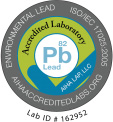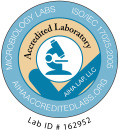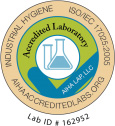 The world of microorganisms and sample identification is truly fascinating, but only if you are using the correct equipment. Today, we will be focusing on the polarized light microscope (PLM). The team at SanAir Technologies Laboratory has put together this article to help you understand what polarized light microscopes are, as well as how they can be used for sample identification.
The world of microorganisms and sample identification is truly fascinating, but only if you are using the correct equipment. Today, we will be focusing on the polarized light microscope (PLM). The team at SanAir Technologies Laboratory has put together this article to help you understand what polarized light microscopes are, as well as how they can be used for sample identification.
Polarized light microscopes direct a beam of altered light, called polarized light, through a sample. The beam travels through a series of filters that change the polarity and wavelength of the light, and the result is a very high-contrast image. PLM analysis is regularly used for analyzing bones, teeth, muscles, geological features, and asbestos.
What Makes a Polarized Light Microscope Unique?
Light is a form of electromagnetic radiation. Radiation is energy that travels in waves. White light is comprised of all of the wavelengths of the electromagnetic spectrum that are visible to the human eye. This is the type of light used in a traditional light microscope. White light travels in random directions. A polarized light microscope can function like a traditional light microscope. Regular white light is passed through a specimen and focused with lenses to magnify the image. However, a polarized light microscope is also equipped with special filters called polarizers, which can be used to convert white light into polarized light.
How Do Polarizers Work?
Polarizers alter the vibrational movement of white light waves so that they travel in one specific direction. This process of converting the white light waves into polarized light is called polarization. Polarizers can be made from synthetic films or natural minerals like tourmaline.
Inside of a polarized light microscope, the polarizer sits between the light source and the sample, polarizing the light as it travels towards the sample. As this polarized light passes through a sample, it is refracted into two or more separate directions of light. White light behaves in the same way, but as it is vibrating in random (all) directions, the refracted light will be oriented in random directions as well; there would be no way to isolate, or differentiate, one refracted light’s orientation and wavelength from another’s. Using polarized light removes all but a single vibration direction of the light that behaves in definite ways as is passes through minerals and other specimens.
Minerals that make up all regulated asbestos, behave similarly, and only two directions of light are generated at a right angle to each other. These are called ordinary and extraordinary light rays. These two waves then pass through a separate filter called an analyzer. In many ways, the analyzer acts as a second polarizer that is oriented perpendicular to the first. Only the light that has been refracted will pass through the analyzer. This remaining light yields a high-contrast image of the sample. Finally, the specific wavelengths of light that are diffracted after passing through the sample in different orientations can be precisely measured. These wavelengths are then used to not only distinguish asbestos minerals from other materials but also to definitively identify the regulated asbestos mineral(s).
At SanAir Technologies Laboratory, our state-of-the-art Asbestos Testing Laboratory provides quality analytical analyses with turn-around times as short as three hours. We use Leica polarized light microscopes for a wide variety of applications, such as bulk asbestos analysis, petrography, mineralogy, and materials analysis. We provide sample testing and analysis for professional firms and make use of advanced asbestos testing methods that provide accurate and reproducible results. SanAir has developed a comprehensive web-based reporting layout that is in an easy-to-read format. You can contact us today by dialing (804) 897-1177.












